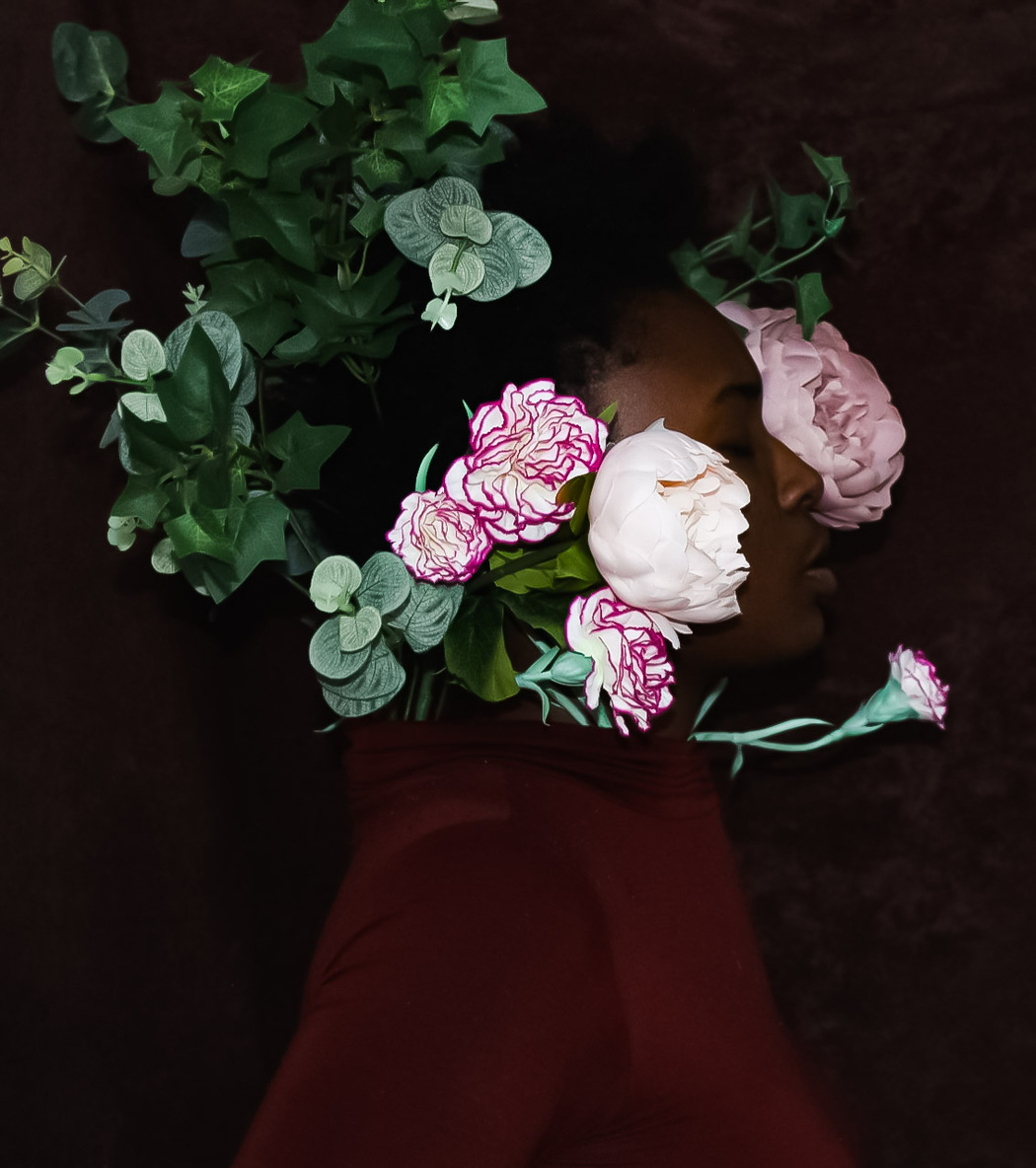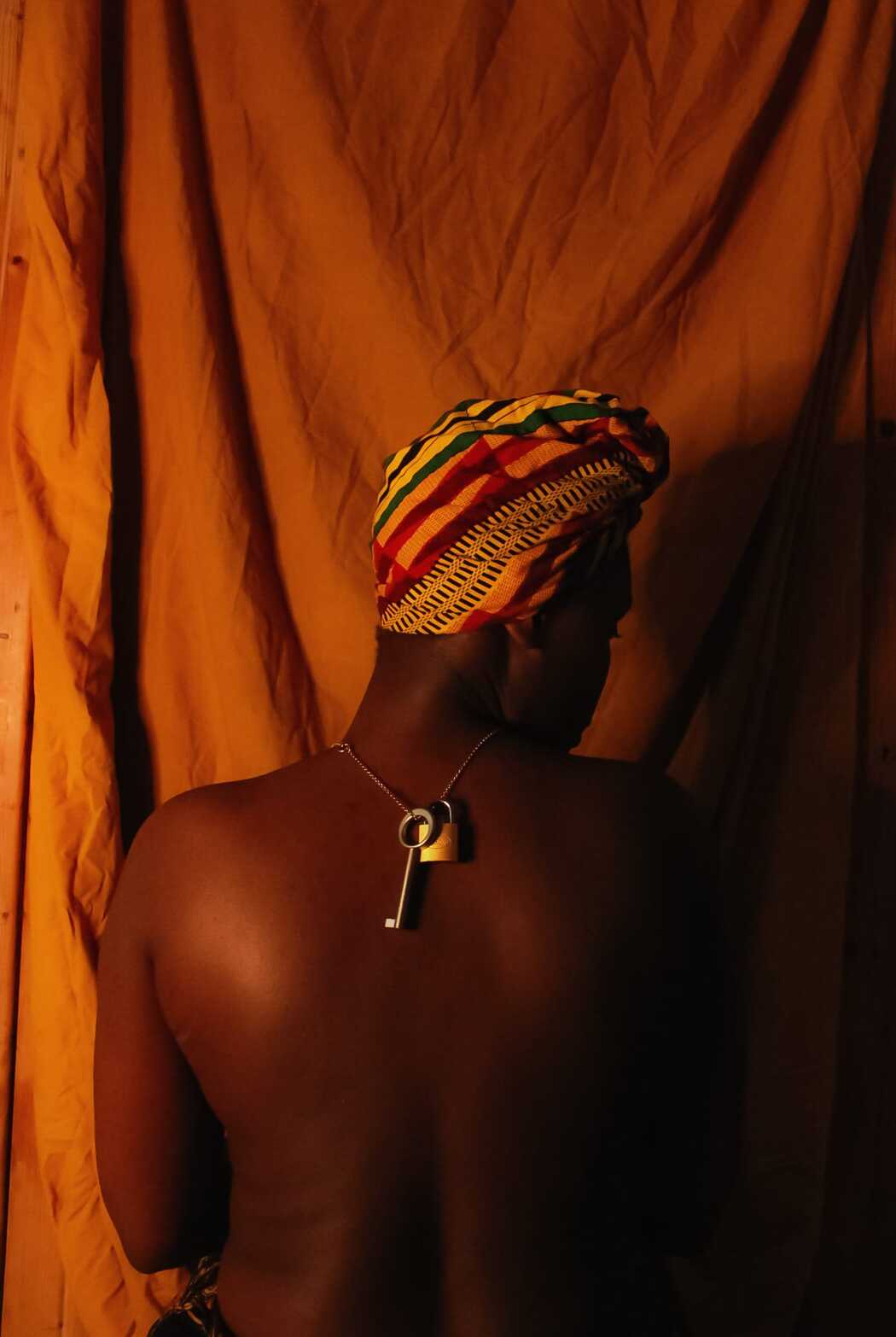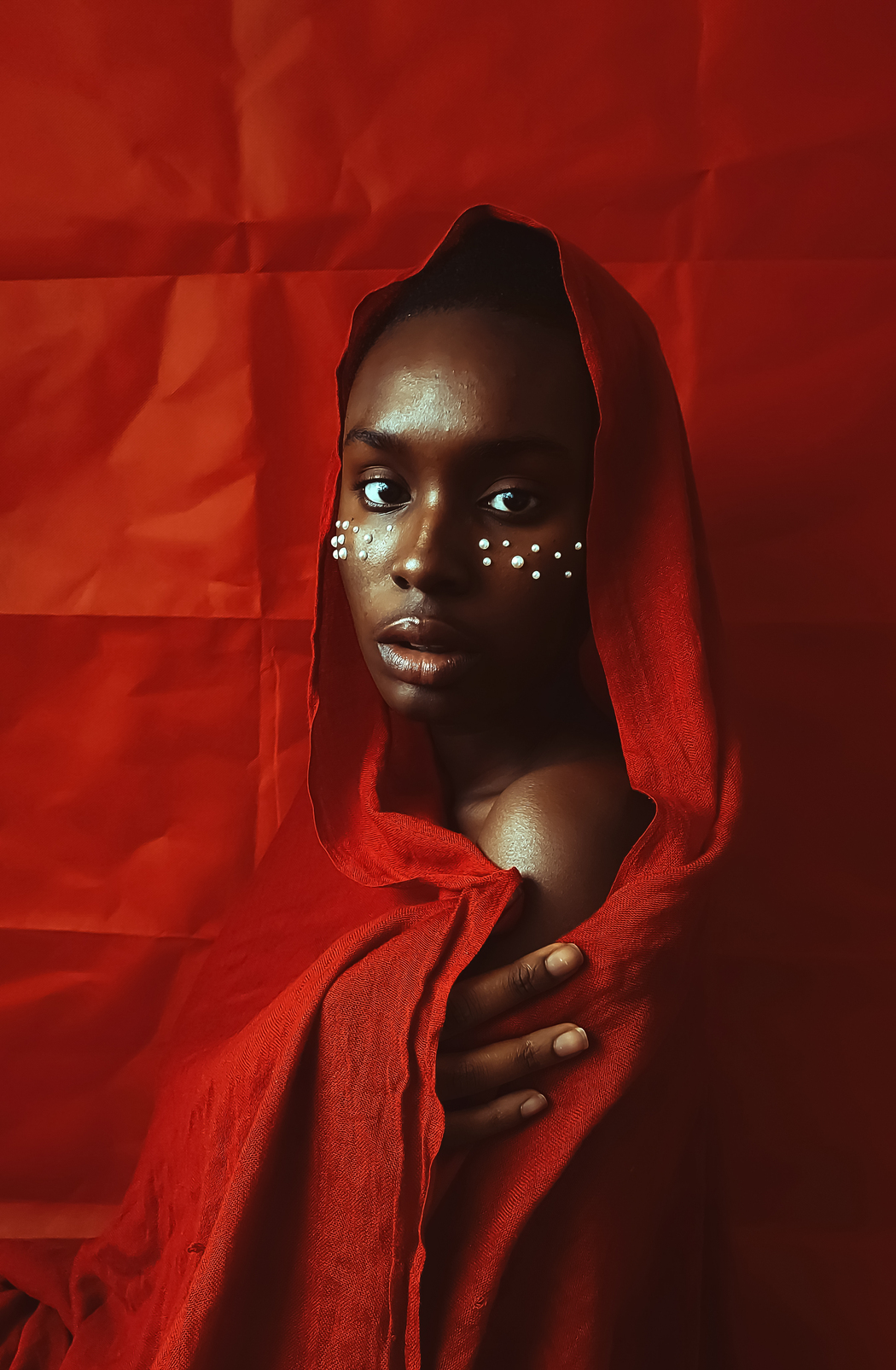Caroline Lacoma
 Caroline Lacoma | What didn’t you try to bury me but you forgot that I was a seed | 2025
Caroline Lacoma | What didn’t you try to bury me but you forgot that I was a seed | 2025
Your work explores transformation and self-reclamation. Can you talk about how your self-portraiture practice helps you document this process of personal evolution?
My self-portraiture practice allows me not only to document my growth but to also to bear witness to it. Over the years, self-portraiture has become a ritualistic act of journaling how I feel, where I am emotionally, spiritually, psychically and even politically. Each image is a thread of a larger “becoming” story. It illustrates and expresses the shifting landscapes within me. I started photographic self-portraiture at a time when I needed to see Black women represented in a way that spoke to my soul. It really started with needing to document an eternal shift within me which then grew into an act of reclaiming my own gaze and narrative. I chose to see myself, I learnt to be comfortable with the discomfort of facing my own light and my deepest shadows. So, the camera became a sort of pen which helps me re-author my story.
The themes of healing and introspection are central to your work. How do you balance vulnerability and strength in your images?
I don’t consciously try to balance them, I don’t think of strength and vulnerability as elements that require balance, if anything they co-exist in this beautiful, complex tapestry that is the Self. So, my work is not a performance of either, instead I am interested in the truth that lies behind both my strength and my vulnerability. Instead of trying to balance either, I try to dissect them in each image. For instance, in one of my pieces titled “The Weight of It All” I suggest that my relationship to strength has been inherited and felt, at times, like a burden to carry. So, there is both vulnerability and strength in confronting this painful truth. Thus, my photography captures this cracked, tender in-between where grief, pain, joy, softness, strength and vulnerability co-occur.
 Caroline Lacoma | The Answers She Holds | 2022
Caroline Lacoma | The Answers She Holds | 2022
Your art seems to blur the lines between reality and the subconscious. How do you navigate these spaces in your creative process?
Much of my creative process is intuitive. Often, I don’t know what I am making until after I have made it, there are times when I don’t even know why I have made a specific piece until weeks, months or even years later. Over the years, I have learnt to be comfortable with not always having the words to describe or explain my pieces. My work is the physical documentation of my subconscious before it makes sense in the physical world. My subconscious is always speaking to me through dreams, through observing the world around me, through art, through people. So, my creative process requires me to listen to this inner yet sharp voice. In my portraits, I build atmospheres which exist in this liminal space between familiarity and surrealism, the known and the unknown. Our inner worlds are symbolic, layered, mysterious yet familiar. Therefore, my creative process is about capturing not just what lies beneath the surface but serves also as a framework to understand the Self.
In your series, you highlight the fluidity of personal identity. How has your own identity evolved through the creation of these works?
Creating these works has held a mirror to my face and revealed to me how complex identity is. Identity isn’t static nor easily defined especially as a Black woman in diaspora navigating societal projections, inherited worldviews and internal reclamations. Through my self-portraiture, I see myself as multiple, I hold different roles in both my creative and my healing process. Indeed, I am the one who creates, but I am also the subject of my creations, I am the one who watches and the one who is being watched. Similarly, I am the one who grieves and the one who is being mourned, the one who heals and the healer. Each work is a negotiation of who I am, and who I am becoming whilst being a graveyard for who I once was. It has been a journey of letting go of fixed definitions and rigid ideas about who I am and should be. Much like art, identity is ever-shifting, ever-unfolding and fluid.
 Caroline Lacoma | La Samaritaine | 2020
Caroline Lacoma | La Samaritaine | 2020
What role does color play in your photographs? Is it a symbolic tool, or does it emerge naturally through your process?
It is a blend of both. There are some self-portraits where I am very intentional with the colours and hues. For example, in “The Sun At Midnight” the colour blue has the core function of evoking the ocean and representing nostalgia and longing. In some of my other pieces, colour arrives spontaneously and organically. I also like to subtly engage with the four elements in my work (fire, earth, water and air) so I use colour to symbolise and represent the element that is present in a particular piece. Regardless of how it emerges in my self-portraits, colour is always very symbolic and so is the lack thereof. Sometimes, I would plan for a portrait to be in colour only to realise that it is stronger in black and white. Therefore, I would say that colour serves the wider emotional ecosystem of each portrait.
Your debut solo exhibition is titled “The (Un)Making of a Woman.” What can visitors expect from this journey, and what kind of emotional terrain will they navigate?
That is a beautiful question. The (Un)Making of a Woman is a personal and spiritual reckoning, a visual “dance” unravelling, exposing and deconstructing inherited scripts around womanhood, Blackness, beauty and strength. The exhibition invites viewers into moments of grief, memory, ritual, sacred rage and most importantly rebirth. It is not a linear path, but a constellation of moments which when weaved together form a complex yet rich personal story of becoming. Visitors can expect to move through self-portraiture, collage and poetry. Each piece marks a different stage of becoming. It is an offering, an invocation and a mirror which I hope can breed collective healing.
How do you approach the idea of rupture and reconciliation in your work? Can you share an example of how this has manifested in a particular piece
“Rupture and reconciliation” — there is so much poetry in these two words when put together. Rupture and reconciliation co-exist in my work, for me they come as a pair not separately. Sometimes, when reconciliation isn’t possible or enough then I explore the idea of integration. How do I integrate what has been ruptured in my creative work? In “What Didn’t You Do To Try To Bury Me But You Forgot That I Was A Seed.”, I confront my history with sexual abuse. However, the piece does not dwell on what has been violated and broken, it honours the body as a site of survival, as a source of life and praises its commitment to transformation without trying to minimise the trauma experienced. Thus, the piece becomes a space of reflection, not fear nor anger. That’s what reconciliation looks like in my work. It starts from within. It does not erase, it integrates.

Leave a Reply